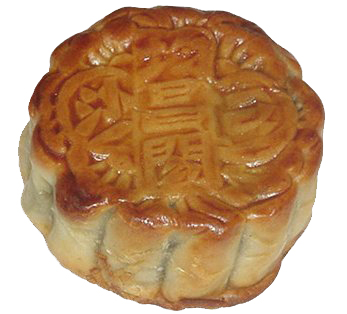Mooncakes: A Culinary Adventure
To Western taste buds, Chinese sweets can be as somewhat startling departure from the ordinary. Though moon cakes may be an expensive delicacy, they are something of an acquired taste for Americans. Among the highlights of each year's Moon Festivities at the museum is watching kids try their first taste of moon cake. Perhaps translating the name as something besides "cake" would temper their shock at finding a salted egg yolk or bean paste inside a colorful pastry. Indeed, how does one translate any of these flavors into English without inciting revulsion in the uninitiated?
Mung bean paste, Taro paste, White lotus seed and egg yolk?
Perhaps it would be best to eliminate the word "paste" as it sounds more like something we encourage children not to eat. But the word "mung" also is no more attractive than the dirty green color of the legume. Although I have enjoyed various deserts made from mung beans and taro, no children and few adults at our festival will be able to identify either one, which may be a good thing. And I don't think calling taro, "sweet potato" or "purple yam" would be much better.
"White lotus seed" actually sounds somewhat attractive by comparison, until you add "egg yolk" into the mix. Of course, Americans eat eggs just as much if not more than Chinese, but the problem is that the yolk is not in the mix, but left intact inside the pastry. While Chinese see a symbol of the full, yellow moon, most Americans see a monstrous mixing bowl failure.



Comments
Post a Comment